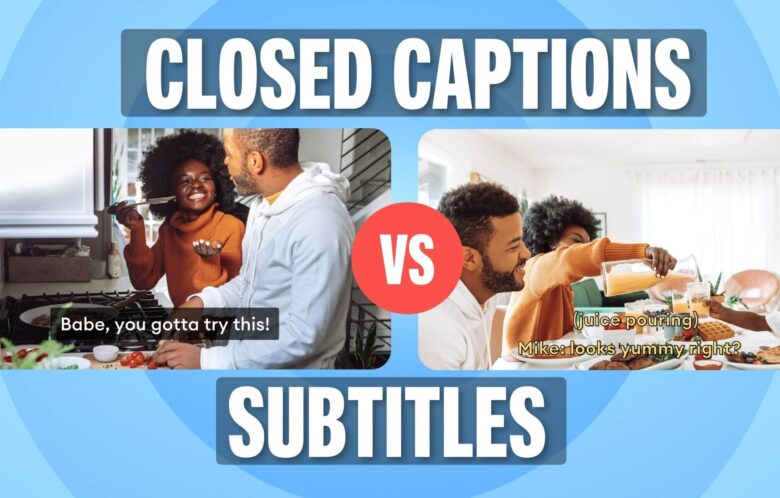For many creative souls, presenting online video content is a way of living. You’ll find your recipient online – be it, consumers, people wanting to learn, or an audience ready to be entertained and take in what you are serving.
The ideas for new video content are almost endless; only limited by the imagination, as video content is a rising field with more and more demand for all sorts of different video content on multiple online platforms, such as YouTube, TikTok, and Instagram. In fact, 82% of internet data is taken up by video (2024) – a number expected to increase.
If you are looking for ways to improve your video content – don’t miss out on this article. Come on board, and learn about how one secret (not so secret) ingredient can help strengthen your video content and open up doors to better engagement metrics, improved SEO and a global market.
In this article, we will discuss why subtitle generators have become a strongly potent video tool in a competitive field, and how AI technology can help automate the process of subtitling your videos.
Contents
Videos being watched in silent mode

Source: lumen5.com
Did you know that most of today’s videos are watched on mute or with the audio volume significantly decreased? In our digital world, it is straightforward to watch videos almost everywhere: in public spaces, as well as at home, and the norm around this is to be private and not to disturb people around with sound from videos. Hence, this is why people mute videos.
Obviously, it is in its place to be respectful to others, but how can you then possibly ensure your video message is delivered? – When your video might not even be heard? Subtitles provide a valuable solution because they unite visual and audible content and allow viewers to fully absorb your content, even when they can’t hear what is being said.
Not everyone can choose whether they want to add sound or not. There is a big group of hearing-impaired individuals worldwide – a group that is expected to rise to 700 million by the year 2050. Therefore, subtitling videos represents a meaningful effort toward creating an inclusive environment for all. It is estimated that over 2.5 billion people globally have some degree of hearing loss, and actually, subtitles have been meant to support those deaf or hard of hearing almost since they originated in the 1900s, so this is an ongoing important purpose to keep in mind.
Translating videos
With the internet providing global access, why not take advantage of a much larger potential audience and consumer market? Your content might be relevant to more than just your closest friends and followers. The key to expanding internationally is to conquer language barriers – one way or another!
You might think that you’ll need multilingual skills or will have to team up with professional translators, but modern AI technology might just offer exactly what you need.
Technology to Help Streamline Subtitling and Translation

Source: tarjama.com
In fact, artificial computer intelligence has made it possible to automatically transform speech into text (speech to text = transcription), and then swiftly create subtitles out of it – even translating them into multiple languages.
An AI subtitle generator can transcribe with an accuracy of up to 98% given that the audio track is decent quality. – Already making it a valuable tool within the world of video editing.
AI translator
For accurate translations, there’s nothing comparable to a professional translator. However, AI technology has levelled up the game for shorter-material content such as social media subtitles – providing an easier solution to create high-quality content quickly and professionally.
The complexity of translation lies in linguistic characteristics, and how you usually can’t just have software translate word-by-word if you want to get a proper meaningful translation of a whole sentence. Using advanced language models, the AI subtitle generator considers language-specific factors such as grammar and sentence composition to “understand” text and to translate subtitles into the most correct sentences.
This means bye-bye, tedious manual task of subtitling and translating! – and that now these tasks will only be a matter of minutes, depending on the length of your video.
Subtitles that are Easy to read

Source: 3playmedia.com
However, it doesn’t mean that the complete task of editing subtitles has become automated. Most experienced video editors will know that subtitles are usually less wordy than the actual speech transcription. The transcription is reduced with a number of unnecessary words to make it easier to read, as we usually tend to speak faster than what we read.
Styling your Subtitles
Yet another side to editing subtitles is the creative one, where you can choose the font style, size, color, position, and more – which is relevant in regard to the visual expression of your subtitles and the way they take part in defining your brand and message.
Subtitles add SEO value
By adding subtitles to your videos, you can unlock their hidden SEO potential. SEO, short for search engine optimization, is a process where search engine robots on a regular basis “crawl” websites all over the internet to detect various factors that help them decide the ranking of those pages in search inquiries. This involves detecting relevant keywords to understand what the content is about.
However, the visual and audible content of videos cannot be detected and indexed by these robots, and therefore do not get properly accounted for in SEO. You can change this limitation by adding a simple subtitle file to your video containing those all-important keywords. This way you will give the robots something to detect, and by incorporating the right keywords matching your video content, you can improve your keyword profile and affect your ranking in keyword search inquiries – ultimately achieving more visibility.
Closed caption subtitles
In order to improve SEO the subtitles have to be added as a subtitle file – so-called closed caption subtitles. This is because search engine robots can’t read subtitles that have been burned onto a video (hardcoded, open caption subtitles), but they can on the other hand read a subtitle file that is uploaded with the video.
Furthermore, closed caption subtitles can be turned on and off, and also provides the opportunity to upload multiple subtitle files translated into more languages for you to reach a wider audience.
How are closed caption subtitles created?

Source: veed.io
Using specialised AI subtitling software, the process of subtitling is pretty simple and usually goes like this:
- Upload your video to the software platform.
- Let the software auto-generate subtitles for your video.
- Translate them if you want.
- Edit if needed.
- Download the subtitles as an SRT or VTT file.
- Upload the subtitle file with your video on your chosen video distribution platform.
If you prefer to burn subtitles onto your video, only the saving process is different, as instead of downloading a subtitle file you have to export the whole video with subtitles hardcoded onto it.
Ready, set, subtitle!
Remember that the road to success isn’t usually a straight line, and takes lots of learning and adjusting along the way. – Also, when it comes to creating catchy video content.
Although subtitles are just a brick in the puzzle of succeeding as a content creator and social media influencer – the benefits of adding automatic subtitles to your videos are crystal clear, and having read this article you should be ready and set to start adding your subtitles in the most strategic possible way.
